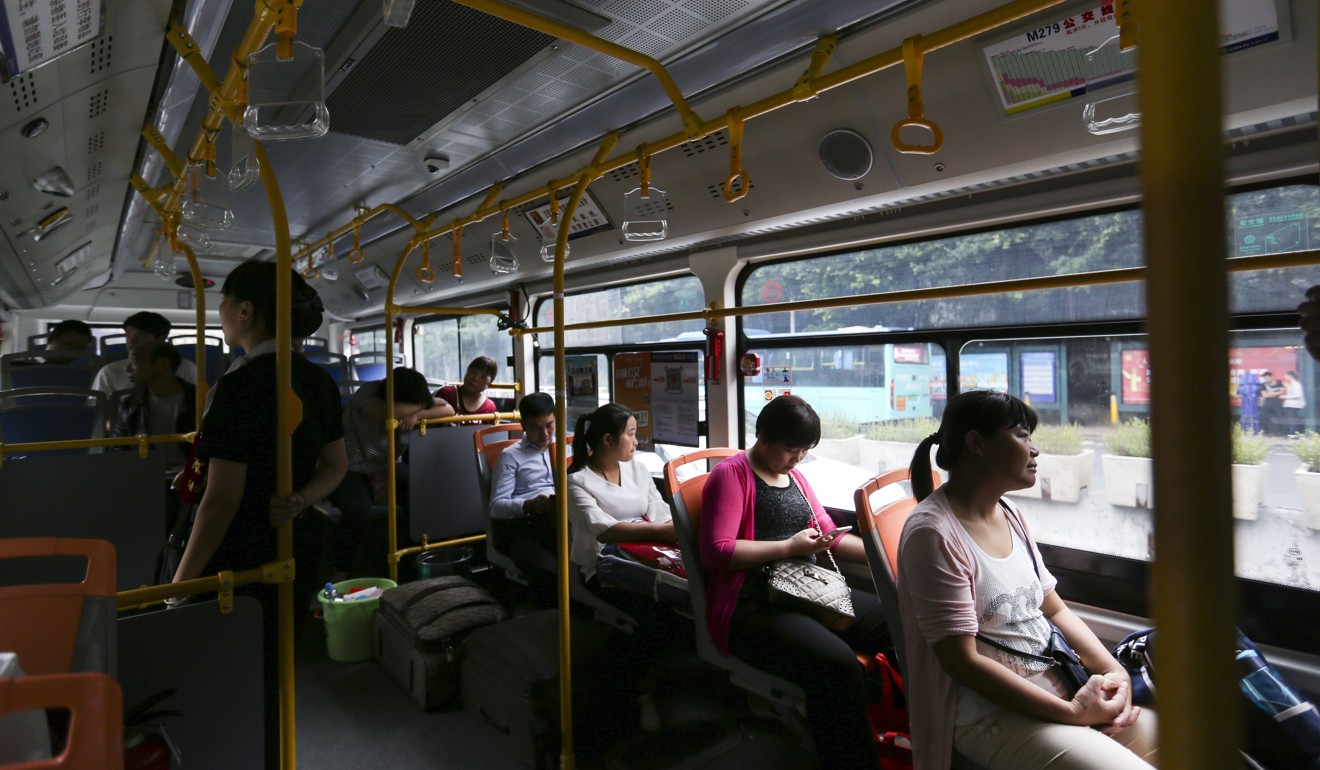
Shenzhen’s all-electric bus fleet is a world’s first that comes with massive government funding
- The city’s 16,000 e-buses cost more than US$1 billion a year for the central and local governments
In China’s accelerated drive to replace petrol-engined cars with battery-powered vehicles, Shenzhen has secured not just a front seat in the mainland, but also a world’s first as the only city with an entire bus fleet that runs on electricity.
At the end of 2017, the city operated more than 16,000 electric buses and by the end of this year, all 13,000 taxis would be electric vehicles (EV).
Shenzhen’s claim to fame is a result of heavy Chinese government policy and funding support – namely subsidies to public transport companies.
Its success bodes well for Beijing’s “Made in China 2025” industrial strategy in which new-energy vehicles and EVs – passenger cars, SUVs and commercial vehicles – are a key area of focus, with the ambition to produce 3 million cars by 2025 among other targets.
Yet, extending Shenzhen’s experiment to replicate in other mainland Chinese cities look uncertain as the central government plans to withdraw subsidies by 2020, funding that has fuelled rapid EV sales growth since 2014 and making China the world’s biggest EV market.
Shenzhen’s plan to create an all-electric public bus fleet began in 2013.
The purchase price for an e-bus is higher but the subsidies for its operations are enough to offset the higher expense
To achieve the goal, a Shenzhen public bus operator is granted a total of 500, 000 yuan (US$72,150) worth of subsidies every year for each vehicle that it runs – 400,000 yuan from Shenzhen authorities and 100,000 yuan from the central government per vehicle to encourage the use of e-bus nationwide.
With the city’s 16,000 e-buses costing 8 billion yuan a year for government, the level of generosity is unseen anywhere else in the mainland.
Electric taxis also receive subsidies from the central and local governments, but at a smaller scale of 136,000 yuan for each vehicle a year.
The city also built 40,000 charging piles with an unspecified amount of investment.

“The purchase price for an e-bus is higher but the subsidies for its operations are enough to offset the higher expense,” said Zhang Longwen, a vice general manager of Shenzhen Bus Group’s public bus operation unit. “Businesswise, using electric buses is a good deal for operators.”
“In Shenzhen, electrifying the public bus and taxi fleets is a money-driven programme and benefits companies such as BYD,” said Qian Kang, a Zhejiang-based entrepreneur dealing in car parts.
“The ultimate goal is to help those domestic companies build e-buses with cutting-edge technologies, which are affordable to operators with the absence of lofty subsidies.”
About 80 per cent of the electric buses on Shenzhen’s roads were manufactured by Shenzhen-based carmaker BYD.

